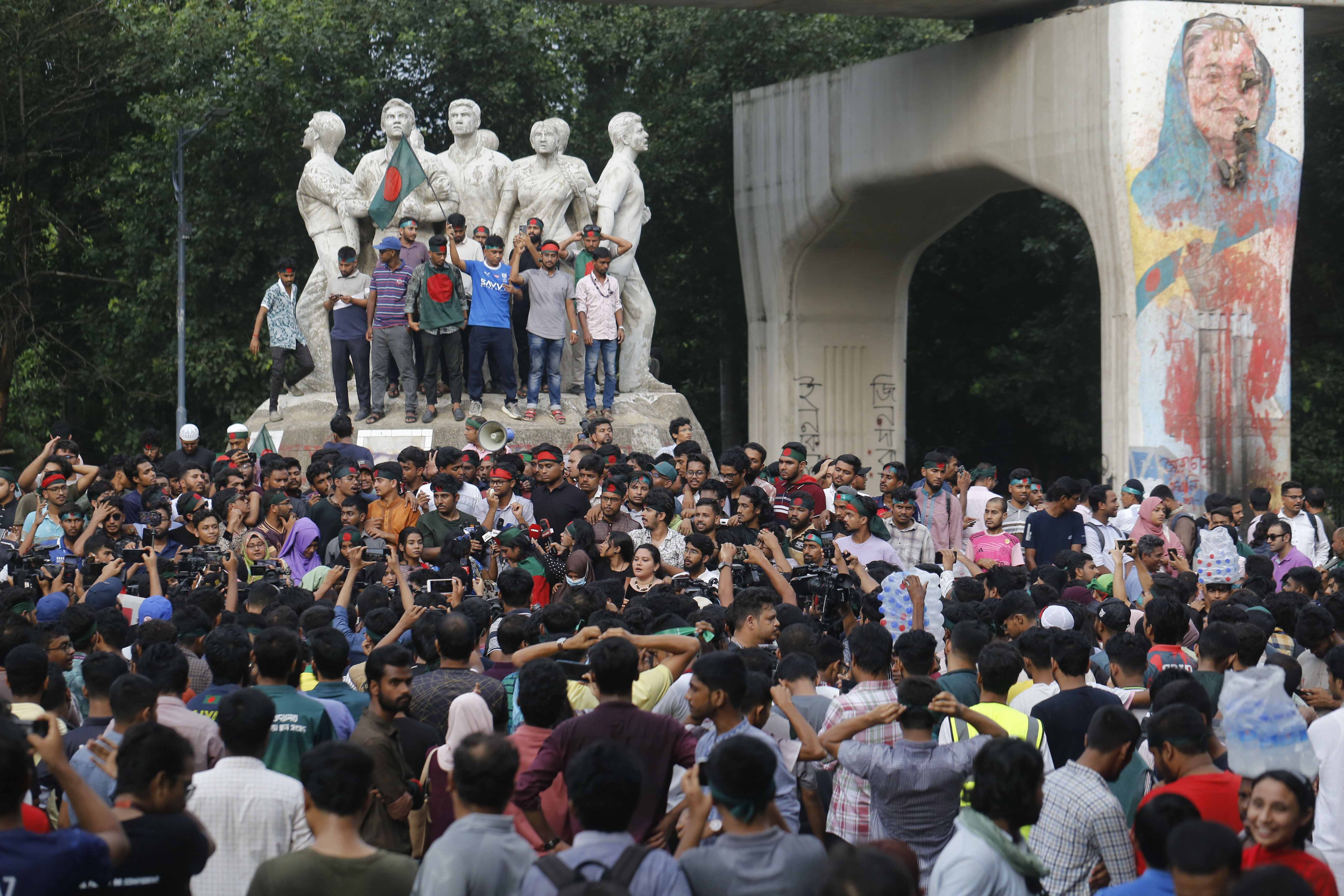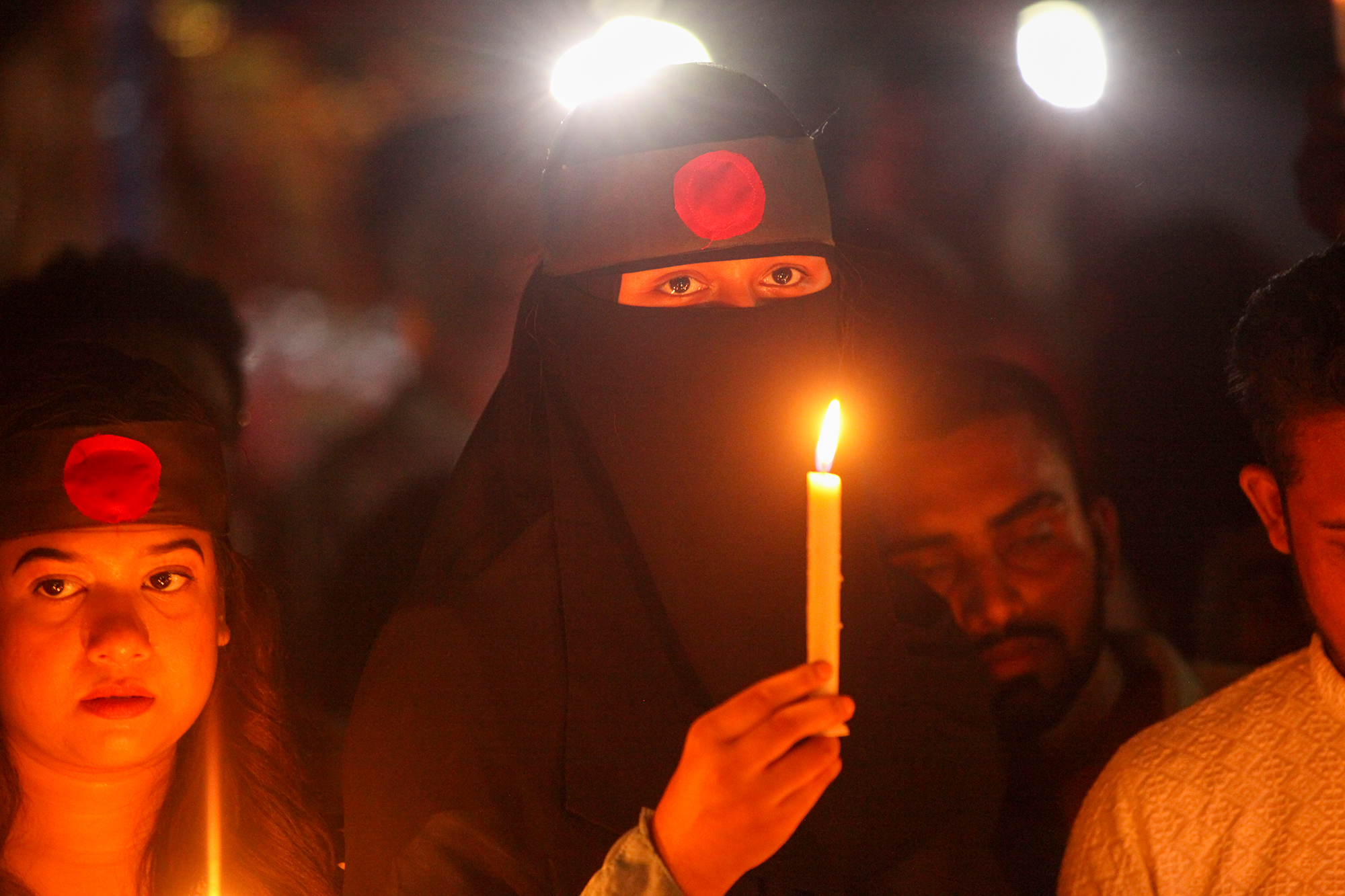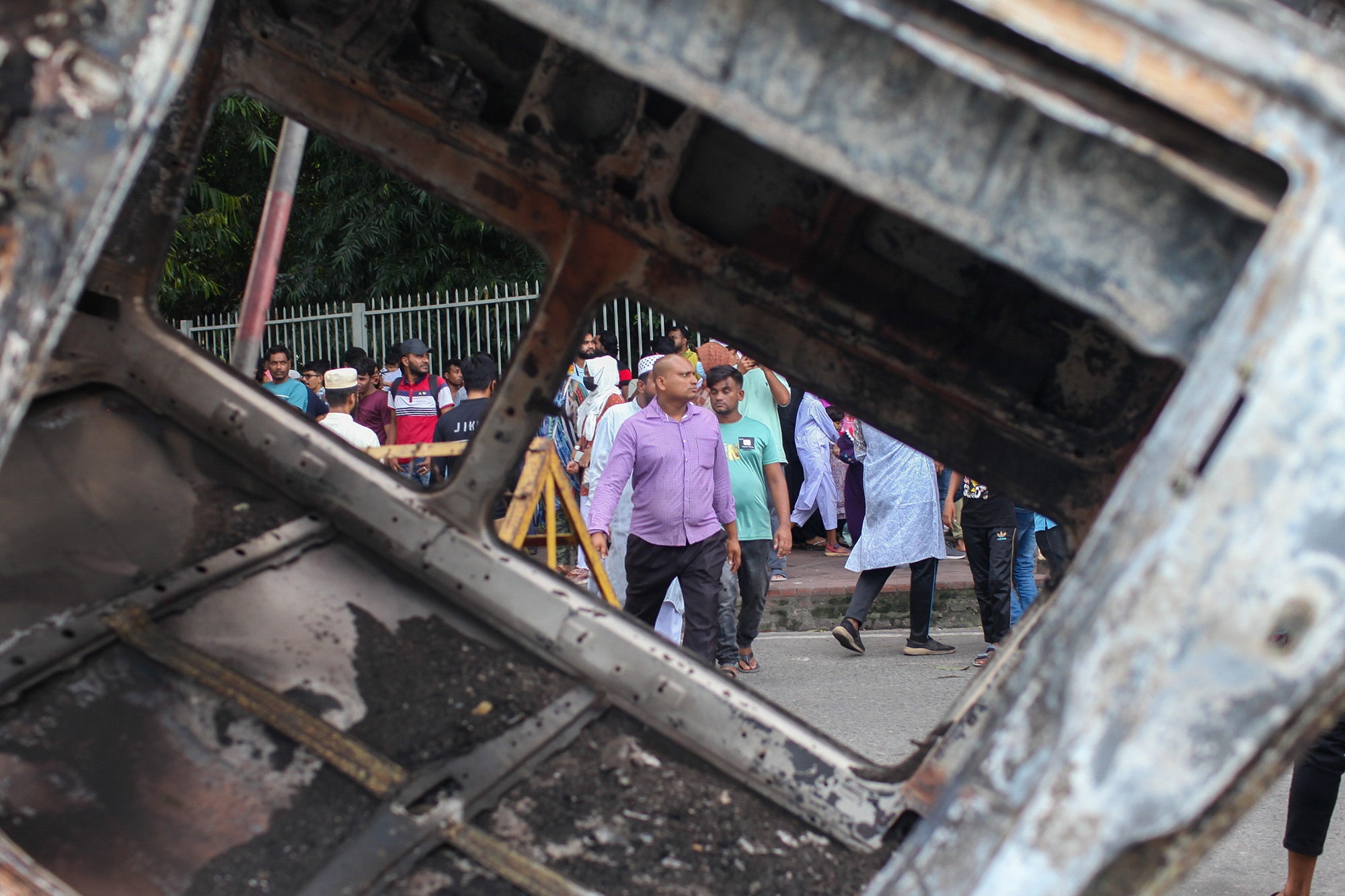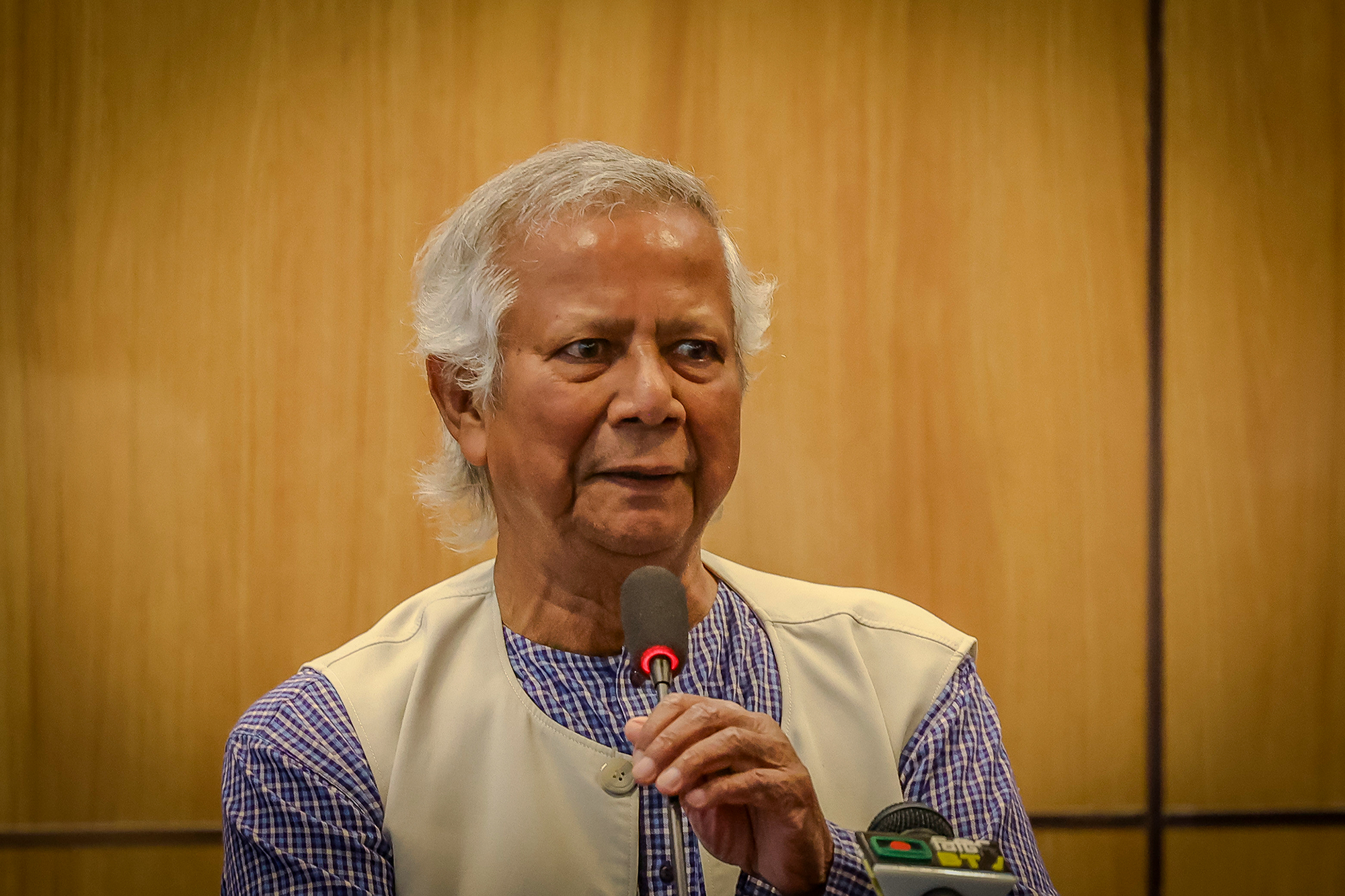Forcing the "Iron Lady" into exile

On July 19, 2024, some government websites, including that of Bangladesh Bank and the Prime Minister’s Office, were crippled by hackers claiming allegiance to the agitating students. A message read in blood-red capital letters: “It’s not a protest anymore. It’s a war now.” When the whole world became aware of the grave violent situation in Bangladesh, this message ignited many relevant questions related to the quota movement by the students, who demanded fair competition to get government jobs through merit only.
The former Prime Minister of Bangladesh, Sheikh Hasina, and her government faced the gravest threat to their existence in the face of sustained student agitation for two weeks. Even after accepting the initial demands of the students, this movement turned into a mass movement that started demanding the resignation of Sheikh Hasina.
The “Iron Lady” of South Asia, who could make her regime opposition-free in the last 15 years, had to flee from Bangladesh after resigning from the office of the Prime Minister on August 5, 2024.
The story behind the spark
Two images of university students have been burned into the collective psyche of most Bangladeshis. Abu Sayed, a student at Begum Rokeya University in Bangladesh's Rangpur district, was shot shot in the chest by a policeman. He fell to the ground dead, a metre-long baton in his right hand. The video of Mir Mugdha, an apolitical MBA student at Bangladesh University of Professionals, who was shot dead while distributing water to students at a protest rally, went viral.
More university and college students fell to police bullets in Dhaka, Chittagong, Barisal, Khulna and other cities as the country of 170 million was plunged into a frenzy of agitation that widened, accelerated and turned violent after Sheikh Hasina made derogatory remarks about the student community. The death toll so far stands at least 440 protesters and nearly 50 policemen, although it is widely suspected that the number could be higher.
The unprecedented protests, which began in the third week of June on the fraught issue of jobs for children belonging to families of the 1971 liberation war veterans, took a violent turn when Hasina commented on national television that the Government should provide jobs to the descendants of the families of the Muktijoddhas (Liberation War fighters), not the Razakars, a disparaging Bengali term used to describe people suspected to have volunteered to help the Pakistani army during the independence struggle and however, betrayed the Bengalis and their idea of Bengali nationalism.

PM’s jibe sparked protest
This deeply offended the students, whose numbers swelled in Dhaka, Chittagong and other cities, and who took to the streets in protest at this humiliating remark by Hasina. The Awami League, the prime minister's party, unleashed armed cadres from its own student wing, the Chhatra League, who attacked the agitating students, who in turn defended themselves.
But when the violent agitation, allegedly fuelled by the infiltration of students loyal to the Islami Chhatra Shibir, the student wing of the Jamaat-e-Islami party, turned deadly, Sheikh Hasina's authoritarian regime unleashed the police, the notorious and US-sanctioned Rapid Action Battalion (RAB) and the Border Guard Bangladesh (BGB).
Shoot-at-sight orders
As the agitation showed no signs of abating and the death toll kept mounting, the government responded further by issuing shoot-at-sight-orders. The student-government conflict went into a spiral as the Awami League regime intensified its actions. It was, however, forced to take a step back when it said that the prevailing quota system could be revisited by the Supreme Court.
On July 21, amid a nationwide curfew and a complete communication and information shutdown, the Supreme Court drastically cut the quota for descendants of Muktijoddhas to 5 percent and 1 percent quota each has been reserved for tribes, differently-abled individuals, and sexual minorities. Earlier, the quota system ensured 56 percent of government jobs for specific categories: 30 percent for descendants of 1971 liberation war veterans, 10 percent each for women and people from underdeveloped districts, 5 percent for tribal communities, and 1 percent for persons with disabilities. This left only 44 percent for the general category.

A history of protest
Student-led agitations and political movements are not new in Bangladesh. Their involvement in university politics has had a long and glorious history since before the birth of the nation in 1971. University and college students were at the forefront during the 1952 Language Movement, the 1971 Liberation War, the 1990 overthrow of the HM Ershad regime, and the 2018 road safety protests.
While Sheikh Hasina’s Awami League has been in power since 2009 – through questionable and unfair means – it has been occasionally shaken by political movements led by the opposition Bangladesh Nationalist Party (BNP). Blaming the BNP, the Jamaat-e-Islami, and other colluding groups became a worn-out stance of the Awami League and its known allies.
By all accounts, however, Hasina was unprepared for the formidable challenge posed by the students, even as anti-Awami League sentiment ran high in Bangladesh and among dissidents living abroad, largely because of corruption at all levels, high price rises and the lack of a democratic system of governance. There were calls for her to step down or leave the country, but the 77-year-old was determined to stay in power. She tried to marshal all her resources, including the army, to control the student movement and restore order in Dhaka and other cities.
Army’s stand
However, the army was not prepared to obey orders for draconian measures. The army chief, General Waqar-uz-Zaman, despite being a distant relative of Hasina, insisted not to use its guns on students. Hasina was apprehensive about granting magistracy powers to the army, which betrays a latent fear that harks back to August 15, 1975, the day when some army officers staged a coup d’etat to kill her father Sheikh Mujibur Rahman and most other family members.
Hasina was unwilling to resign until the last moment, yet, she had to exit under military pressure. Bangladesh has descended into chaos, and a wave of vendetta has been unleashed against Awami League leaders and activists across the country. Her compulsion to leave the country rendered the Awami League leaderless, most of its top leaders tried to flee from Bangladesh, while others are struggling to survive there.
India’s role
A key variable in the events leading up to the massive riots is the Indian government's rather curious initial stance of describing the widespread protests and violence as Bangladesh's "internal matter". This flies in the face of New Delhi's influence over Bangladesh and its role in the country's murky politics. India's considerable leverage over Sheikh Hasina's regime is not well received by other political parties and Bangladeshis in general, who believe that the withdrawal of Indian support could lead to the collapse of the Awami League.
During the run-up to the last elections in January 2024, New Delhi played an overtly neutral role but made all efforts covertly to retain Sheikh Hasina in power through a questionable election. New Delhi demonstrated its important geopolitical position, by providing Hasina a safe passage, when she fled from her country.
No less eyebrow-raising is the United States’ position on the high death toll, barring a strong travel advisory cautioning its citizens to reconsider travelling to a country torn by “civil unrest”, criminal activity, and the threat of terrorism. There has not been even a squeak from Washington on the human rights situation arising out of the brutal police crackdown on the students and the ensuing deaths.

What next?
On August 8, Muhammad Yunus, a Nobel Laureate, was sworn in as the head of the interim government of Bangladesh, with 17 others including two student leaders, who are the representatives of Bangladesh's powerful GenNext, the student-youth platform “Students Against Discrimination”. The interim government promised to restore peace and stability to this country, which indeed is an important part of South Asian politics, putting an end to one of the most turbulent periods in the 53-year history of Bangladesh.
So, Bangladesh in the next few months will function as a laboratory to find out the effectiveness of the students' movement in transforming the political structure of a conflict-ridden society in terms of ideology, power distribution, and appropriation of economic dividends.
This text is based on a former version originally published under Creative Commons by 360info™.
Anindita Ghoshal is Associate Professor of History at Diamond Harbour Women’s University, Kolkata, India. Her area of research includes Partition and refugees’ studies with special emphasis on eastern/northeastern India and Bangladesh. She is the author of Refugee, Borders, and Identities: Rights and Habitat in East and Northeast India, and has edited Revisiting Partition: Contestation, Narratives and Memories.
